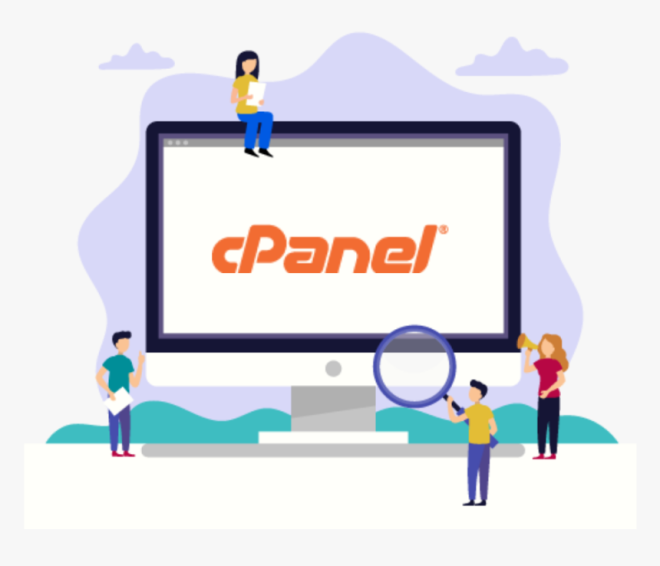
Table of Contents
Introduction:
cPanel is a powerful web hosting control panel used by millions of website owners and administrators worldwide. While it offers a user-friendly interface and a wide range of features, users may encounter various issues from time to time that can disrupt website functionality and performance. Understanding the common causes of these issues and knowing how to effectively troubleshoot them is essential for ensuring smooth operation and minimizing downtime. In this guide, we will explore some of the most common cPanel issues, along with their causes and solutions.
Common cPanel Issues: causes and solutions
Certainly! cPanel is a powerful web hosting control panel, but like any software, it can encounter issues. Here are some common issues users might encounter with cPanel and some troubleshooting steps:

- Login Problems:
- Ensure that you’re using the correct username and password.
- Clear your browser cache and cookies, then try again.
- Reset your cPanel password if necessary through your hosting provider’s control panel or support.
- FTP Connection Issues:
- Double-check your FTP credentials for accuracy.
- Verify that your FTP client is configured correctly.
- Ensure that your firewall settings aren’t blocking FTP connections.
- Website Not Loading:
- Check if your domain name is correctly pointed to your hosting provider’s nameservers.
- Verify that your website files are uploaded to the correct directory.
- Look for any error messages in cPanel’s error logs or your website’s error logs for clues.
- Email Problems:
- Make sure your email accounts are correctly set up in cPanel.
- Check your email client settings for errors.
- Verify that your domain’s MX records are configured properly.
- File Permission Issues:
- Ensure that file permissions are correctly set, typically to 644 for files and 755 for directories.
- Use cPanel’s File Manager to adjust file permissions if needed.
- Database Connection Issues:
- Verify that your database credentials in your website’s configuration files are correct.
- Check if the MySQL/MariaDB service is running in cPanel.
- Look for any error messages in cPanel’s database error logs.
- SSL Certificate Problems:
- Check if your SSL certificate is properly installed and hasn’t expired.
- Make sure your website URLs are configured to use HTTPS.
- Use cPanel’s SSL/TLS Manager to troubleshoot SSL certificate issues.
- Backup and Restore Issues:
- Ensure that your backup settings in cPanel are configured correctly.
- Check if there’s enough disk space available for backups.
- Test restoring a backup to ensure it’s working properly.
- DNS Configuration Problems:
- Verify that your domain’s DNS records, including A, CNAME, and MX records, are configured correctly.
- Use tools like nslookup or dig to troubleshoot DNS resolution issues.
- Resource Limit Errors:
- Check if your account has reached its resource limits, such as disk space, bandwidth, or CPU usage.
- Optimize your website’s performance by optimizing images, caching content, or upgrading your hosting plan if necessary..
- Internal Server Error (HTTP Error 500):
- This generic error can be caused by a variety of issues, such as misconfigured .htaccess files, PHP errors, or server misconfigurations.
- Check your website’s error logs in cPanel for more specific error messages. Review and correct any syntax errors in your .htaccess files or PHP scripts. You may also need to increase PHP memory limit or execution time if your scripts are resource-intensive.
- SSL Certificate Issues:
- SSL certificate problems can occur due to certificate expiry, misconfiguration, or improper installation.
- Check the SSL/TLS status in cPanel to verify the certificate’s validity and configuration. Reinstall the SSL certificate if necessary, and ensure that it’s installed correctly for all necessary domains and subdomains.
- Website Slow Performance:
- Slow website performance can be caused by factors such as high server load, inefficient code, large file sizes, or insufficient resources.
- Monitor your server’s resource usage in cPanel and optimize your website’s code, images, and database queries for better performance. Consider upgrading your hosting plan for more resources if necessary.
- Email Delivery Problems:
- Email delivery issues can arise due to misconfigured email accounts, DNS records, or server blacklisting.
- Verify that your email accounts are set up correctly in cPanel and that your domain’s MX records are configured properly. Check if your server’s IP address is blacklisted using online tools and take necessary actions to delist it if required.
If you encounter an issue not listed here, it’s often helpful to search for the specific error message or symptoms online, as there may be community forums or knowledge base articles that provide solutions. Additionally, reaching out to your hosting provider’s support team can be invaluable for resolving complex issues.
Conclusion:
In conclusion, mastering the art of troubleshooting common cPanel issues is a valuable skill for website owners, administrators, and web hosting professionals alike. By familiarizing yourself with the causes and solutions outlined in this guide, you can quickly identify and address issues that may arise, ensuring the uninterrupted operation of your websites and applications. Remember, proactive monitoring, regular maintenance, and timely intervention are key to maintaining a stable and reliable hosting environment. With the knowledge gained from this guide, you can confidently tackle hosting hiccups like a seasoned professional, keeping your online presence running smoothly and efficiently.
